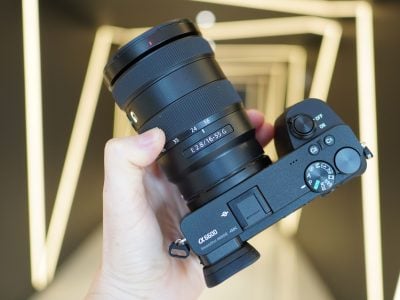Sony A6600 review
-
-
Written by Gordon Laing
Intro
The Sony A6600 is an upper mid-range mirrorless camera with a 24 Megapixel APSC sensor, built-in stabilisation, 4k video, 11fps bursts with autofocus, and increased battery life. Announced in August 2019, it replaces the three-year-old A6500 as Sony’s flagship body and like that model, follows the most recent unstabilised Alpha body, in this case, the A6400, by just seven months.
The A6600 certainly shares a great deal with the A6400, including the same 24 Megapixel sensor, AF system, 11fps bursts, unlimited movie recording, XGA viewfinder and tilting touchscreen, but it adds more than just built-in stabilisation. The A6600 becomes the first Sony APSC body to use the company’s higher capacity FZ100 battery pack, increasing the life to 810 shots under CIPA conditions, roughly double the A6400 and more in fact than the full-frame bodies which use it. The A6600 also becomes the first APSC model in the range to sport a (long overdue) headphone jack, and it now additionally supports eye detection in movies. These four main upgrades carry a premium of around $500 over the A6400.
Like the A6400, the viewfinder remains XGA in resolution, there’s only one card slot (albeit rotated within the chunkier grip in order to accommodate the bigger battery), and while 4k at 24 and 25p use the full sensor width and oversample from 6K’s worth of data, 4k at 30p still incurs a minor crop. The shutter block remains unchanged too with a top mechanical speed of 1/4000 when most rivals at this price boast 1/8000. I’m also disappointed to find the hotshoe doesn’t support a digital connection with the new microphone launched with the A7r IV (although you can still use it in analogue mode). But overall with stabilisation, much longer battery life and a headphone jack, the A6600 resolves pretty much all the major issues with the A6400 and becomes the most desirable APSC body in the series, especially when coupled with the new e 16-55mm f2.8 zoom launched alongside it. Do however note that their combined price is roughly the same as the full-frame A7 III fitted with the Tamron 28-75mm f2.8 zoom, so literally something to weigh-up in comparison if you don’t mind the larger combination. In my full review I’ll help you weigh-up all of the options to help you find the right camera! Start with my video review below, or if you prefer scroll beyond it to the written version, then check out my quality results, sample images and final verdict pages!
Check prices on the Sony A6600 at B&H, Adorama, or Wex. Alternatively get yourself a copy of my In Camera book or treat me to a coffee! Thanks!
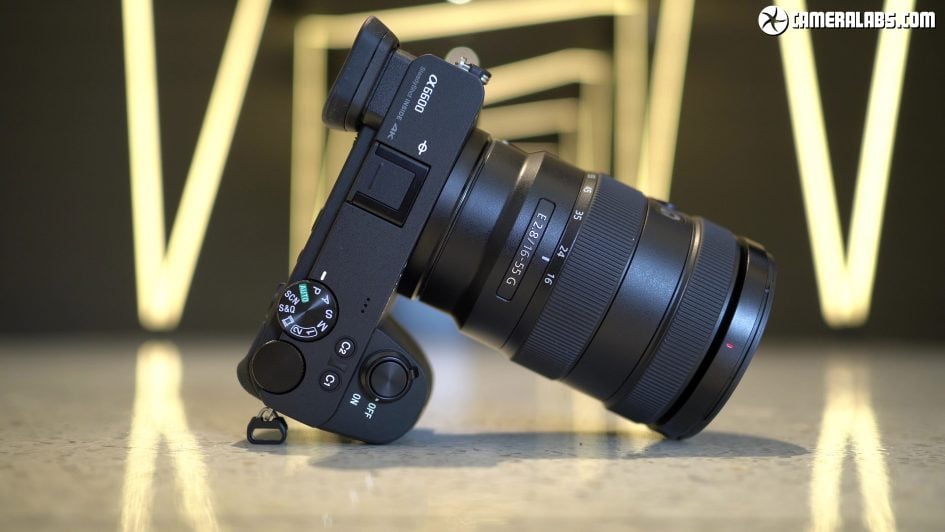
Above: at first glance, the A6600 greatly resembles its predecessor, with both bodies sharing essentially the same design, controls and magnesium alloy shells with weather-sealing. The major physical difference is the deeper grip to accommodate the larger battery, more about which in a moment. In terms of controls, I’d really like to have seen an AF joystick, while eagle-eyed Sony observers will also notice the A6600 now lacks a popup flash – in fact it’s the first A6000 model not to have one, with Sony’s justification being that target customers will either be video shooters or high-end photographers who typically don’t use popup flashes, but I still find them handy for quick fills and I miss it here – what do you think? To be fair, Fujifilm’s X-T3 doesn’t have a popup flash either, but at least it includes a small bounceable flashgun in the box.
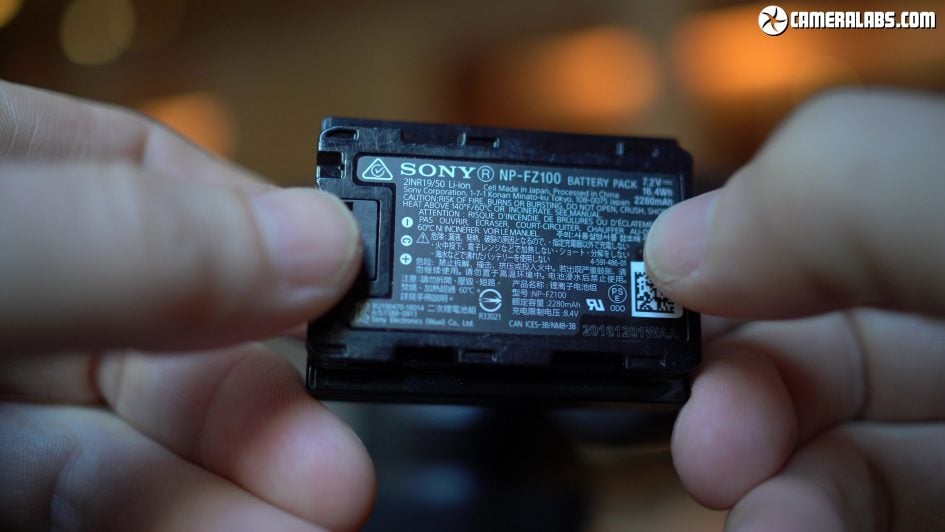
Above: the A6600 becomes the first in the A6000 series to use Sony’s high capacity Z-series battery, and like the full-framers to debut the pack, it transforms the camera in use. Sony quotes 810 shots under CIPA conditions – roughly double that of the A6400 and a tad more than the full-framers which use it – but I managed over 900 shots on a single charge including several minutes of video and Wifi use. In terms of video alone, I even managed to record a single 4k 24p clip lasting three hours and 25 minutes on a full charge. In short, it’s the longest life of any mirrorless camera I’ve tested. Compare it to the Fujifilm X-T3 for instance which in my tests managed less than 400 photos or just one hour’s worth of 4k video (cut into two clips too) on a single charge. The Z battery is by far the highlight of the A6600 and its number one upgrade over earlier models.
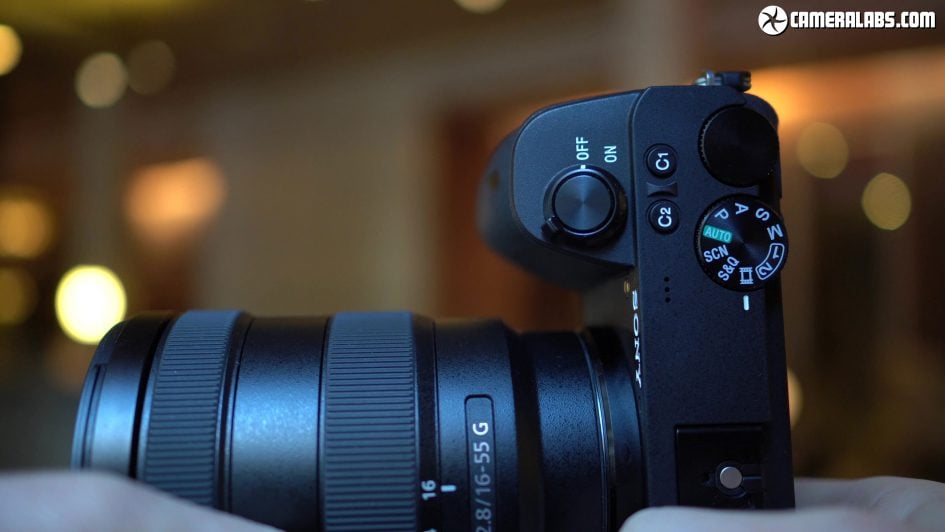
Above: the larger battery means a larger grip to accommodate it and I welcome having more to hold onto with a small body. But personally I wasn’t fond of the shape of the A6600’s new grip which bulged-out as it met the body without providing much of a hooked inner area for your finger tips. The X-T3’s grip may be smaller, but feels better to me personally.
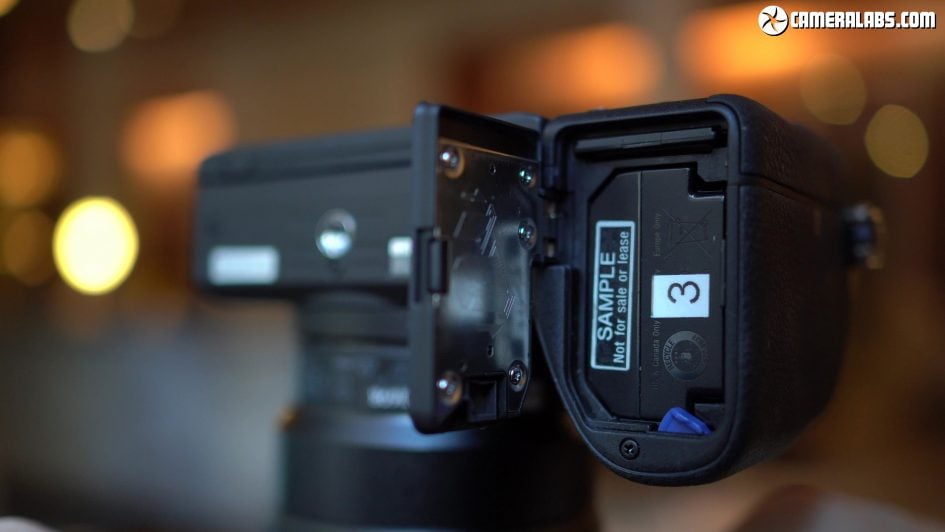
Above: in the first disappointment on a $1400 flagship body, the A6600 continues to employ a single SD card slot, and worse, it still won’t exploit the speed of UHS-II cards – an annoying decision for a camera that’s otherwise so effective for sports, action and wildlife, and after shooting a large burst you can be left waiting some time for the buffer to clear. Fujifilm’s X-T3 has twin SD slots, both of which exploit UHS-II speeds, and it’s also one of the first aspects about the A6600 which might have you considering the full-frame A7 III instead.
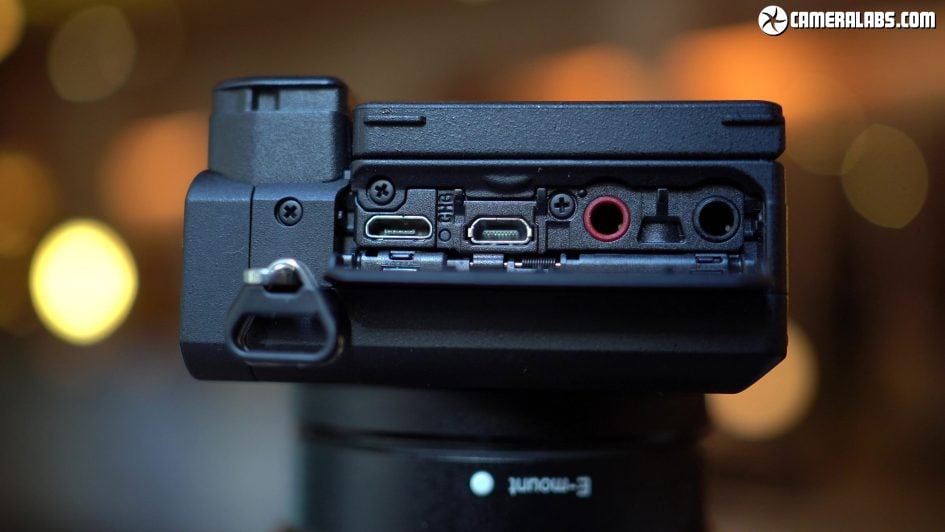
Above: behind a flap on the left side you’ll find the A6600’s four ports: Micro USB, Micro HDMI and now both microphone and headphone jacks. The A6600 becomes the first A6000 model to sport a headphone jack and while it’s long overdue, I’m still pleased to see it here – along with the bigger battery, it’s another of the key upgrades over the A6400 and A6500. The HDMI port will output clean 4k, but sadly there’s still no 10-bit here internal or external, again a feature available on the Fujifilm X-T3 and even externally on the cheaper X-T30. Like most new cameras, the A6600 is equipped with Wifi and Bluetooth, the former allowing quick remote control, while the latter takes care of seamless location tagging via your phone. It’s no different from other recent Sonys, but it still works well.
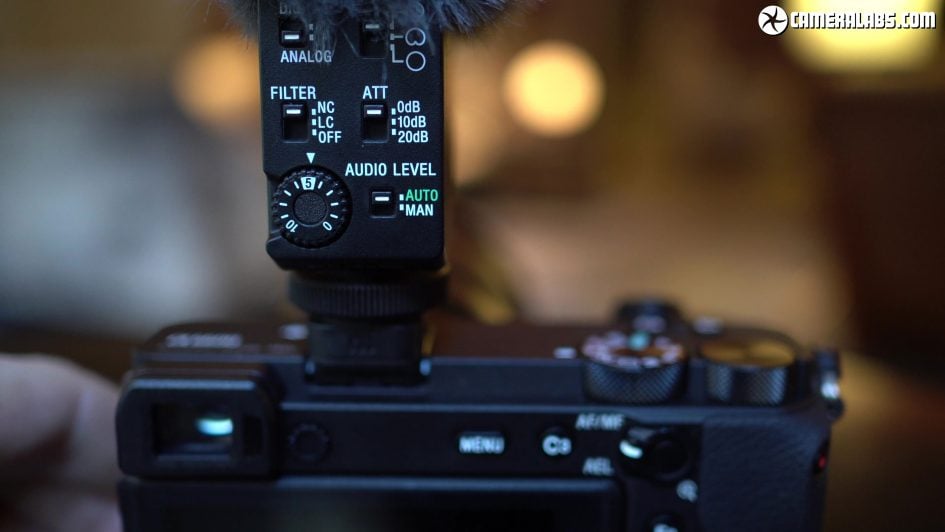
Above: I was surprised to discover the A6600’s hotshoe does not include the pins introduced on the A7r IV to support a digital connection with the new ECM-B1M microphone. Instead it’s Sony’s earlier Multi Interface Shoe, although this will still power the ECM-B1M and support an analogue connection without a cable; so while there’s an unnecessary conversion from digital to analogue then back again with the possibility of an increase in noise, the mic can still apply its DSP effects and I’ll demonstrate them later.
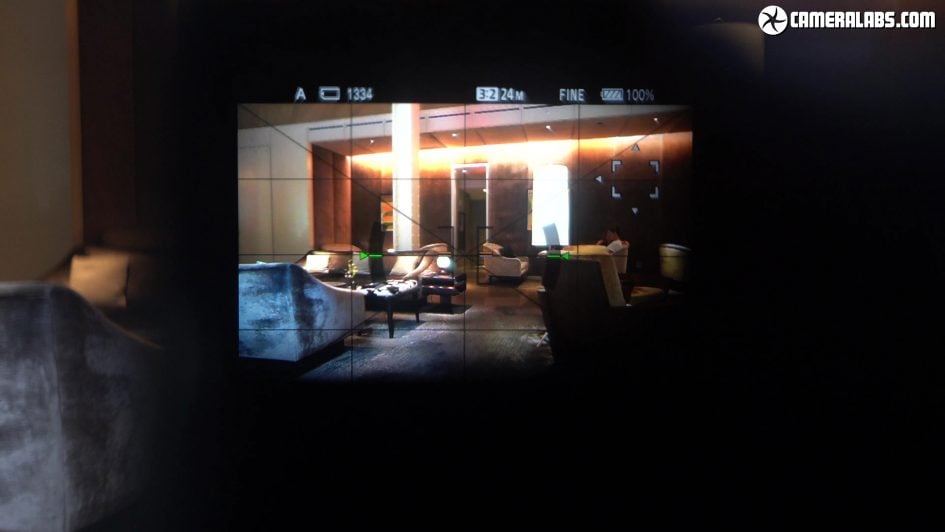
Above: in another disappointing move, the A6600 inherits the 2.36 Million dot OLED viewfinder introduced back on the A6300 three and a half years ago. Don’t get me wrong, it’s not bad, but just outclassed in resolution by a number of rivals, again including the Fujifilm X-T3 which sports a 3.69 Million dot panel that’s more typical on a flagship body in 2019. Remember the resolution of the viewfinder doesn’t affect the image quality, but you do appreciate the extra detail when manually focusing and experience less moire on detailed scenes – I really noticed the difference when framing my wide-angle city views around New York.
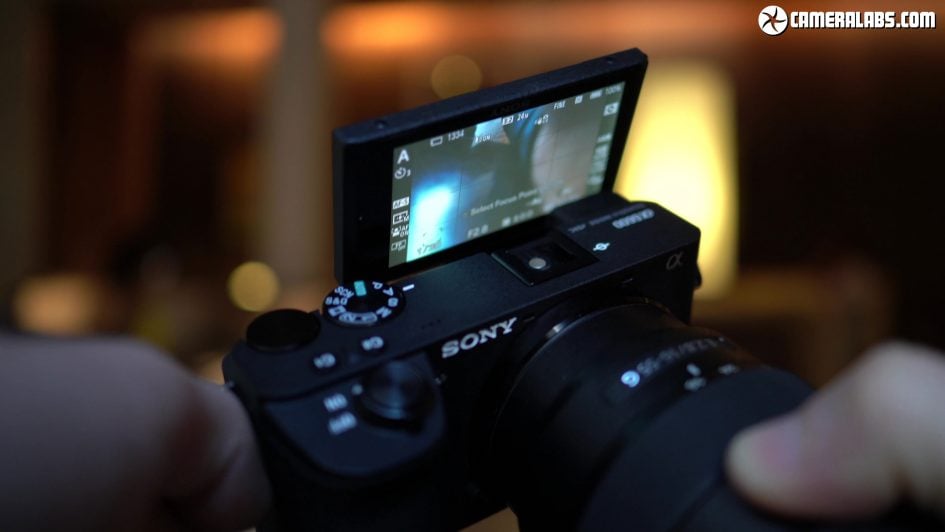
Above:the A6600 inherits the articulated screen mechanism of the A6400, allowing it to angle down by almost 90 degrees and up by 180 to face you for selfies or vlogging; this represents greater flexibility than the earlier A6500, although it’s matched by most models now including Sony’s own cheaper A6100. Note the X-T3’s screen also tilts vertically, but additionally lets you angle it out a little to the side for easier framing in the portrait orientation at high or low angles. Since the main body design hasn’t changed, the A6600 inherits the 3in 16:9 shaped screen of its predecessors, making it wider than most. This is great when filming 16:9 video as it fills the screen, but when shooting still photos in the native 3:2 shape, the image will be presented in a crop with black bars on the left and right sides. Sony does exploit this spare area for shooting information, but the active image area for stills remains smaller than rivals with narrower screens. Like other recent Sony bodies, the A6600 allows you to tap to reposition the AF area – including when composing through the viewfinder – but not much else. Infuriatingly the chunky icons of the Function menu remain untappable, as does the main menu system, while in playback Sony ignores years of smartphone intuition by not even allowing you to swipe between images. You can double-tap to enlarge the view then push it around, but Sony really needs to extend its touch functionality on all models.
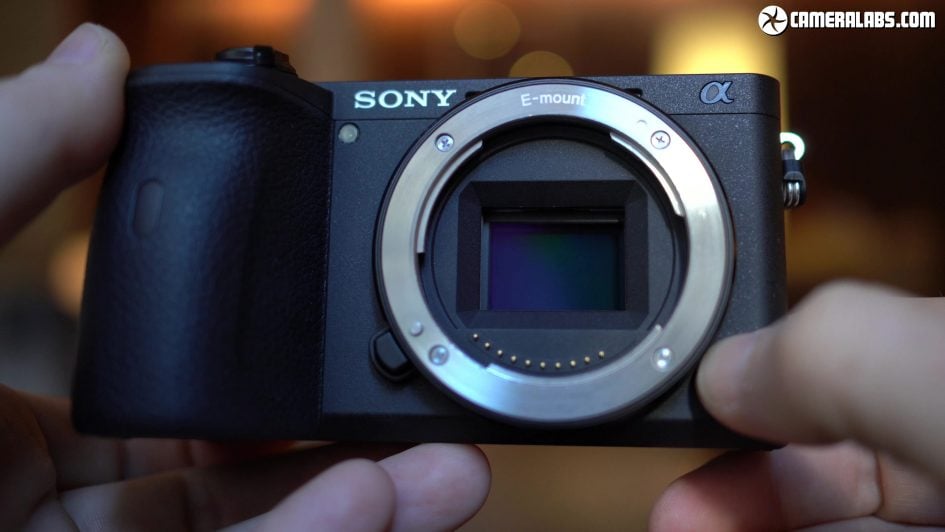
Above: The A6600 employs the 24 Megapixel APSC sensor introduced on the A6300 three and a half years earlier, which means it also inherits a broad array of 425 phase-detect autofocus points across the full height and 84% of the width – that’s pretty much the entire frame. Some may be disappointed the resolution’s not increased, but in terms of photo quality I have no complaints as while Fujifilm’s current lineup offers 26 Megapixels and Canon’s pushed the boat out to 32.5 on the M6 II, I feel 24 or thereabouts remains a sweet-spot for resolution, noise and dynamic range on an APSC sensor and you can see a broad range of photos on my samples page.
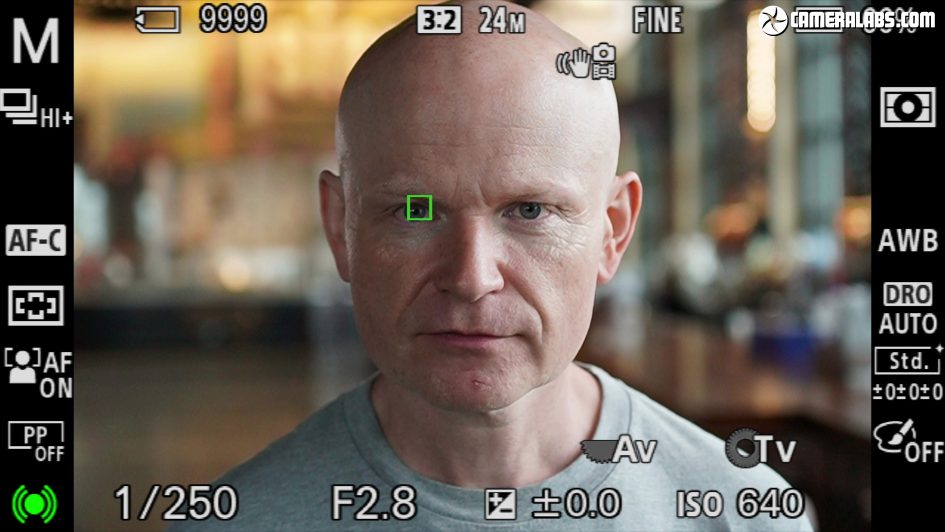
Above: Like other recent Sony cameras, the A6600 lets you choose from a variety of autofocus areas from a variable-sized single area through Zone to Wide where you hand over the reins entirely to the camera.
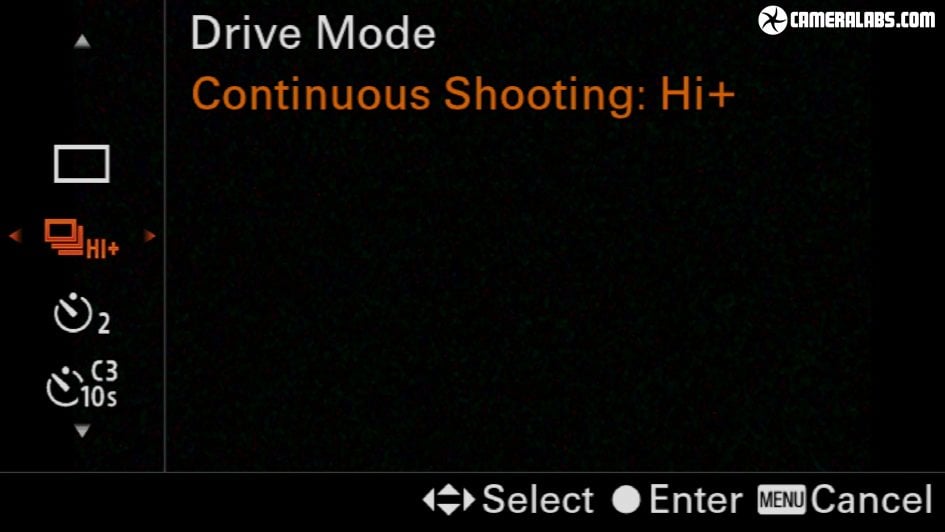
Above: The A6600 of course supports face and eye detection for humans and animals, all updated to Sony’s latest Real Time Tracking versions and like other models with the same capability, it’s eerily good at finding and locking onto an eye quickly and from an impressive distance. I’ve got to a point with Sony cameras where I rarely over-ride the Wide area mode with Real Time Tracking as it simply works so well for most subjects. Fujifilm may now offer phase-detect AF across the entire frame, but Sony’s eye and overall tracking software remains the most confident in my view. Burst speeds are unchanged from the A6300, which means a top mechanical speed of 11fps with autofocus or 8fps if you’d like live-ish feedback between frames. By sticking with the same capabilities as the A6300 from three years ago, Sony’s allowed rivals to now offer faster speeds, including the Fujifilms which offer 20fps if you switch to their electronic shutter, while Canon’s M6 II boasts a 14fps mode.
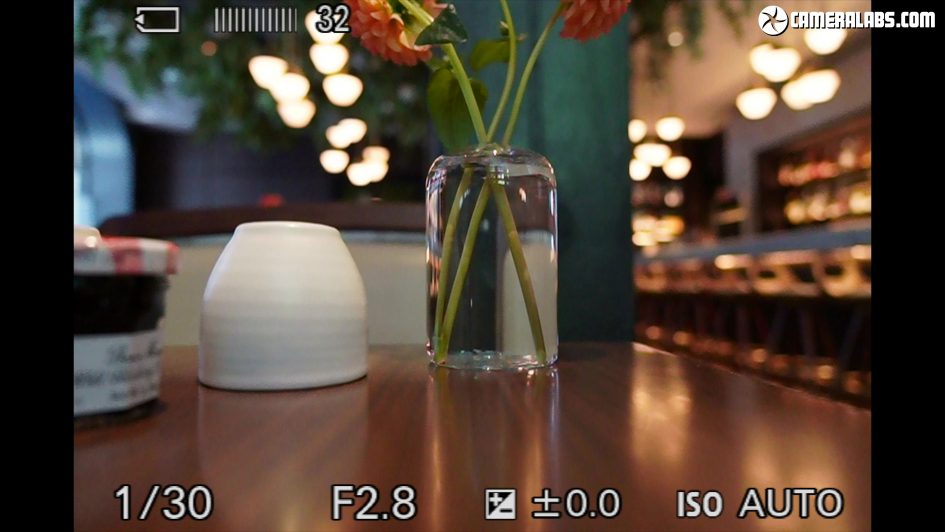
Above: I mentioned it earlier, but it’s worth repeating that not only does the A6600 still only have one card slot, but it’s limited to UHS-I speeds, which means you can be waiting a while for a full buffer to clear after a long burst or a bunch of RAW images – you can see the images counting down in the top left corner here. During this time the camera can still shoot and enter some menus, but some functions may be locked.
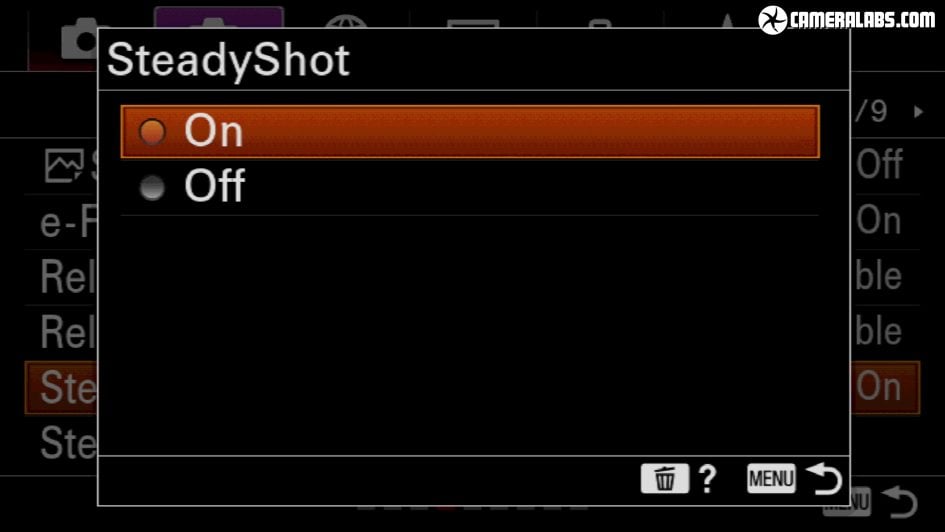
Above: The A6600 becomes the second body in the A6000 series to offer built-in stabilisation, inheriting the exact same capabilities as the A6500. This shifts the sensor to stabilise any lens you attach and like the A6500 before it, with variable results depending on your movement at the time. With Steadyshot enabled in the menu, the view is temporarily wobbly, but after a second or so of holding the shutter release down, the system kicks-in to deliver a far more stable view. Letting go of the shutter or AF button though disengaged the stabilisation with the wobbles returning, so for the steadiest view when composing, you’ll need to keep it pressed. In my tests the built-in stabilisation may not have delivered the eerie floating effect of the best models out there, but still proved beneficial for static shooting. That said, it was less successful when I was walking and filming as I’ll show you later.
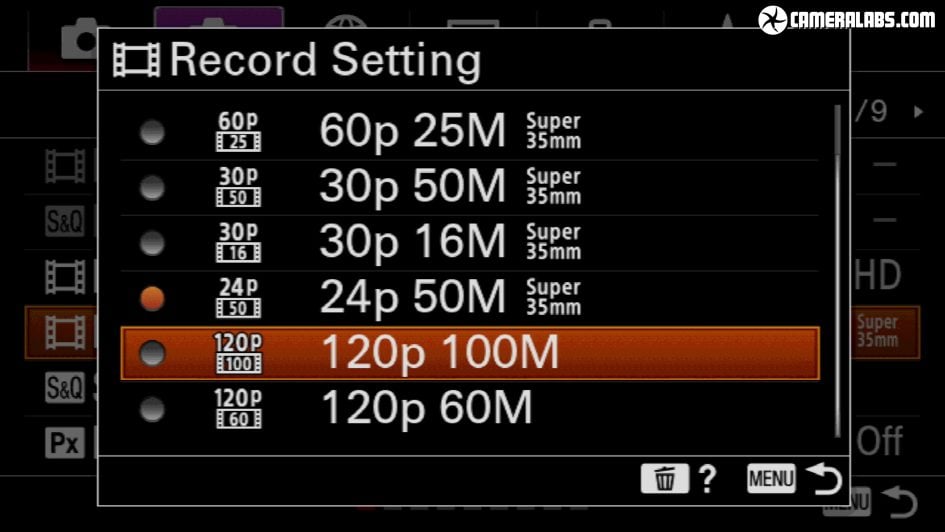
Above: The A6600 inherits the movie quality, video autofocus and unlimited recording of the A6400 before it, with the only new feature being support for eye-detection; since face detection already worked so well though, it’s not a significant upgrade over the cheaper model. So you can film uncropped 1080 at 24, 25, 30, 50 or 60p, or at 100 or 120p with a mild crop for slow motion. Fans of 24p will be pleased Sony’s still allowing it when Canon’s strangely neglecting 24p on non-Cinema cameras.
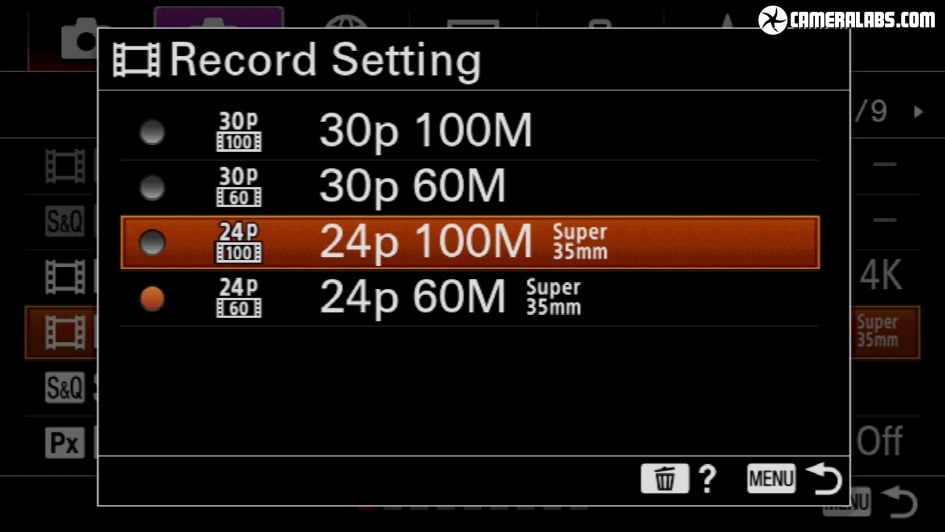
Above: Set the camera to 4k and you can film uncropped footage oversampled from 6k’s worth of data in 24 or 25p, or you can opt for 30p which incurs a mild crop. 4k video is available at 60 or 100Mbit.
Above: Download the original file (Registered members of Vimeo only). There may be no 4k above 30p, nor any 10-bit recording internal or external – all of which is available on the Fujifilm X-T3 – but there’s no arguing with the quality of Sony’s oversampled 4k footage. Here’s an example I filmed in 4k 24p and it’s jam-packed with detail. If you like to grade your footage, there’s the usual array of Picture Profiles available, including S-Log 2, 3 and HLG, although again no 10-bit option.
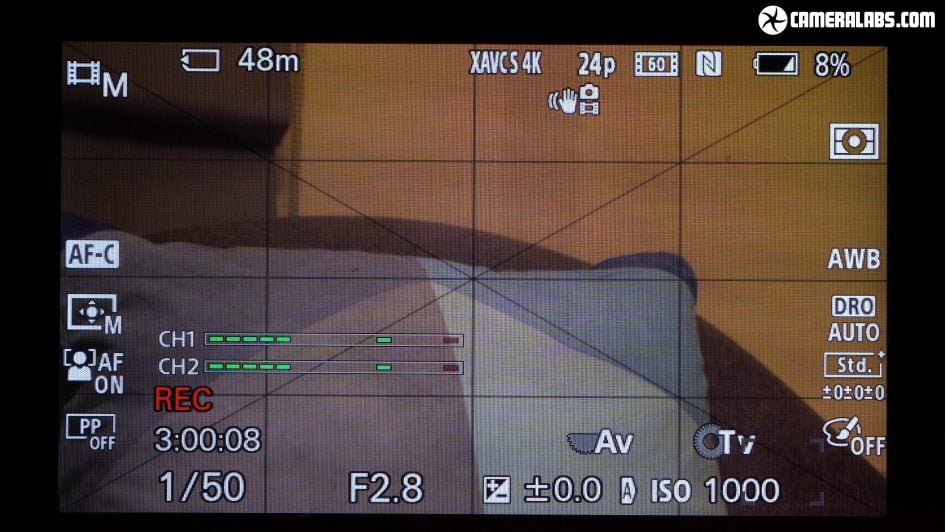
Above: Sony’s also one of the only companies besides Panasonic to offer unlimited movie recording times beyond the usual 30 minute limit, and while Panasonic reserves it for a handful of specialist models, Sony’s been rolling it out on everything since the A6400. But where the A6400’s smaller battery ran out after around one hour’s worth of 4k, the bigger battery in the A6600 allowed me to record a single 4k 24p clip beyond three hours without even having to reduce the over-heating warning. You can see it here passing three hours with 8% of the battery remaining – I ended up recording 3 hours, 25 mins and 17 secs of 4k 24p at 60Mbit/s in a single clip measuring 89GB – seriously impressive stuff for anyone recording events, interviews or lectures, and way beyond anything its rivals can do – I keep going on about Fujifilm’s X-T3, but it can only record half hour 4k clips up to 30p and only two of them on a single charge.
For a full comparison of the video modes, the stabilisation and a vlogging test, please check out my full review video at the top of this page!
Check prices on the Sony A6600 at B&H, Adorama, or Wex. Alternatively get yourself a copy of my In Camera book or treat me to a coffee! Thanks!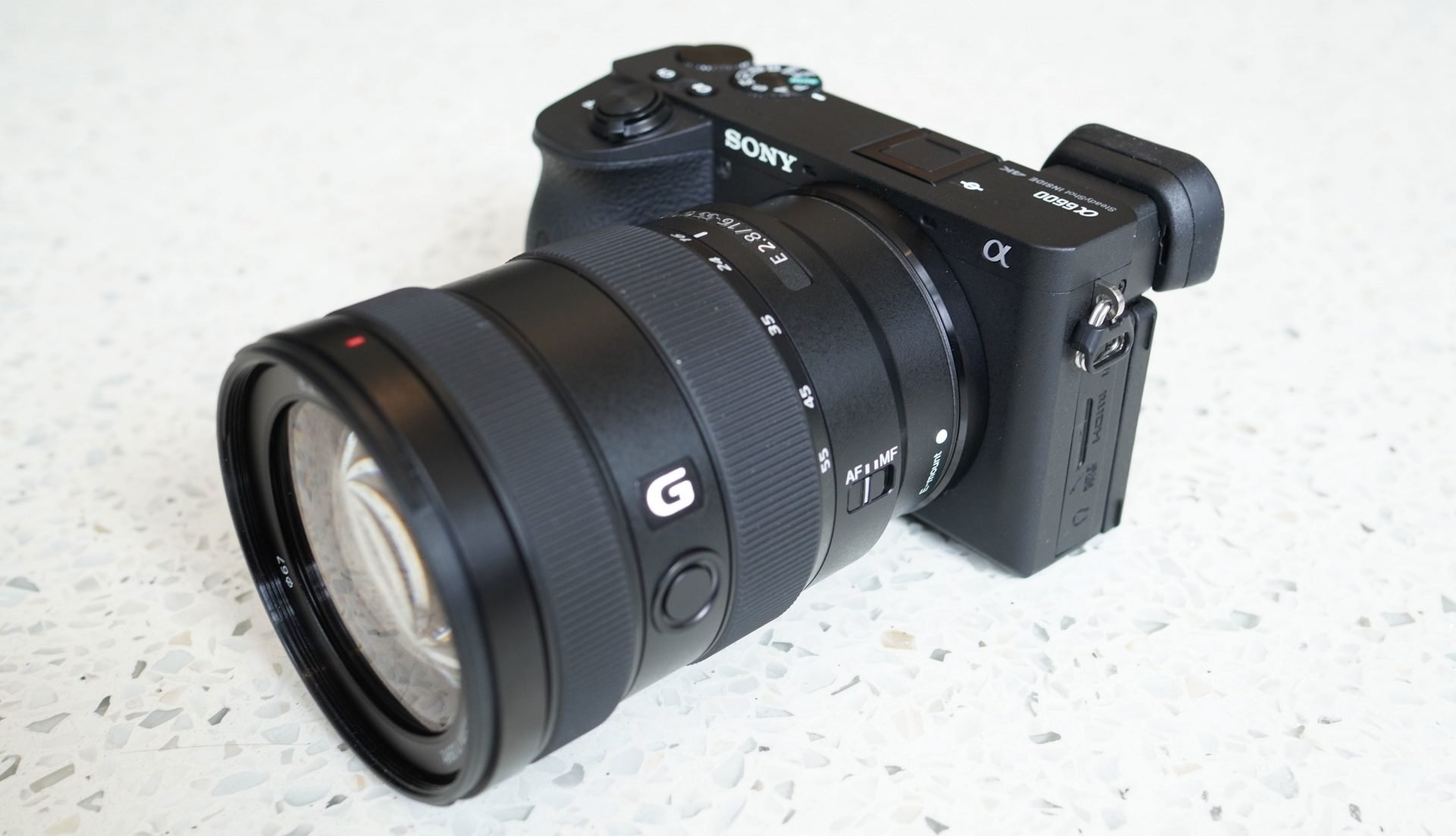
 The A6600 becomes Sony’s most powerful APSC mirrorless camera to date, sporting a 24 Megapixel sensor with confident autofocus across almost the entire frame, 11fps shooting, unlimited video recording, 4k up to 30p, 1080 up to 120p, a screen that angles all the way up to face you, built-in stabilisation, mic and headphone jacks and the longest battery life of any camera in its class. It all adds up to an attractive package, but there’s some key downsides to consider, including a lack of twin SD card slots or even one that exploits the speed of modern UHS-II cards, a fairly average viewfinder resolution for the price, no AF joystick, no touch functionality beyond the basics, and no 4k above 30p or in 10 bit, revealingly all available on the Fujifilm X-T3 at a similar price. To be fair, the X-T3 lacks built-in stabilisation, a long battery life, unlimited recording and a screen that faces you, so there’s lots to weigh-up. Two other rivals come from Sony itself: the recent A6400 lacks the stabilisation, long battery and headphone jack, but is otherwise almost identical and costs a considerable $500 less, while the arguably more compelling full-frame A7 III could end up working out a similar price depending on the lenses you couple them with. So as much as I enjoyed shooting with the A6600 especially with the 16-55mm f2.8, potential buyers have to ask themselves how much they’d exploit those upgrades over the cheaper A6400 or indeed the A6100, whether the alternative feature-set of the X-T3 better suits their needs, or if the dream APSC camera they truly desire already exists in the A7 III with the bonus of full-frame. That said, if you want Sony’s steadily refined photo and movie quality coupled with industry-leading autofocus in the smallest body with the longest battery in the business, then the A6600 is for you.
The A6600 becomes Sony’s most powerful APSC mirrorless camera to date, sporting a 24 Megapixel sensor with confident autofocus across almost the entire frame, 11fps shooting, unlimited video recording, 4k up to 30p, 1080 up to 120p, a screen that angles all the way up to face you, built-in stabilisation, mic and headphone jacks and the longest battery life of any camera in its class. It all adds up to an attractive package, but there’s some key downsides to consider, including a lack of twin SD card slots or even one that exploits the speed of modern UHS-II cards, a fairly average viewfinder resolution for the price, no AF joystick, no touch functionality beyond the basics, and no 4k above 30p or in 10 bit, revealingly all available on the Fujifilm X-T3 at a similar price. To be fair, the X-T3 lacks built-in stabilisation, a long battery life, unlimited recording and a screen that faces you, so there’s lots to weigh-up. Two other rivals come from Sony itself: the recent A6400 lacks the stabilisation, long battery and headphone jack, but is otherwise almost identical and costs a considerable $500 less, while the arguably more compelling full-frame A7 III could end up working out a similar price depending on the lenses you couple them with. So as much as I enjoyed shooting with the A6600 especially with the 16-55mm f2.8, potential buyers have to ask themselves how much they’d exploit those upgrades over the cheaper A6400 or indeed the A6100, whether the alternative feature-set of the X-T3 better suits their needs, or if the dream APSC camera they truly desire already exists in the A7 III with the bonus of full-frame. That said, if you want Sony’s steadily refined photo and movie quality coupled with industry-leading autofocus in the smallest body with the longest battery in the business, then the A6600 is for you.



